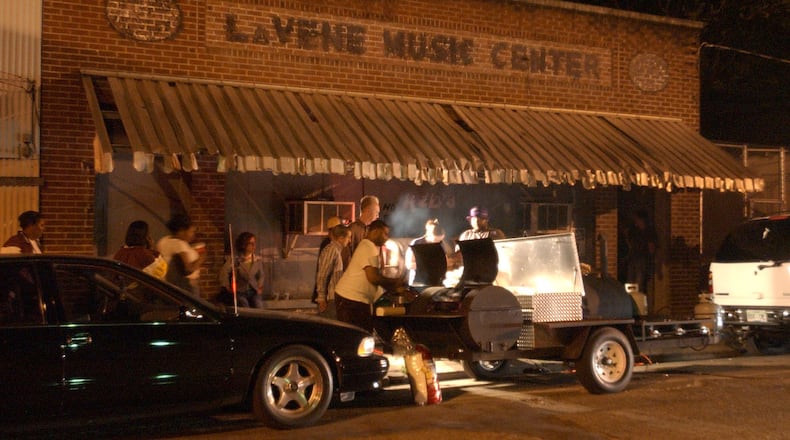Editor’s Note: This story is one in a series of Black History Month stories that explores the role of the arts in the Black community. This story originally ran on Feb. 22, 2019.
For those who aren’t from around here, “chitlins” are a soul food dish made from pig intestines. The dish dates to American slavery when the master ate “high on the hog” — keeping the ham and bacon — while giving his slaves the less desirable parts, among them the chitterlings or chitlins.
Much like the lowly chitlins that nurtured slaves, the Chitlin’ Circuit nurtured African-American musicians, actors and other entertainers during the era of racial segregation.
The Chitlin’ Circuit grew out of a time when Black people were not allowed to perform at white establishments. From the 1930s until the 1960s, the Chitlin’ Circuit had its heyday. The network consisted of Black-owned nightclubs, dance halls, juke joints and theaters in the South, on the East Coast and parts of the Midwest. African-American musicians and other performers flourished at these welcoming venues in the era of Jim Crow.
Credit: LOUIE FAVORITE / lfavorite@ajc.com
Credit: LOUIE FAVORITE / lfavorite@ajc.com
Clubgoers could buy soul food at these venues, but the big payoff was seeing top-notch Black entertainers — blues, gospel or R&B performers who got their start on the Chitlin’ Circuit.
“It was African-Americans making something beautiful out of something ugly,” said music historian Preston Lauterbach, author of “The Chitlin’ Circuit: And the Road to Rock ’n’ Roll.”
“It was one of the few places that Black culture could be celebrated” during Jim Crow, Lauterbach said.
Many of today’s renowned African-American performers owe their start to the Chitlin’ Circuit. On the circuit, artists such as B.B. King, Bobby “Blue” Bland, Sam Cooke, Ike and Tina Turner, and Otis Redding helped give birth to modern-day Black music.
Also on the circuit, some of Georgia’s greatest music legends cut their teeth, including Ray Charles, James Brown, Gladys Knight and the Pips, and Little Richard.
Lauterbach highlighted Little Richard as a prime example of a consummate Chitlin’ Circuit entertainer.
Early in his career, Little Richard performed in the circuit clubs in Georgia and other states as a female impersonator, and as part of a rambunctious group called the Tempo Toppers and as a solo performer. All this was acceptable, even expected of performers on the circuit, Lauterbach said.
Georgia had its share of venues on the circuit. One of the best known is the Royal Peacock in Atlanta, which is still operating. Other Georgia venues include the Douglass Theatre in Macon, the Morton Building in Athens and the Liberty Theater in Columbus. By the 1970s, those venues had fallen on hard times, but thanks to grassroots efforts, they’ve been renovated, according to the Georgia African American Historic Preservation Network.
Lauterbach’s book explores the connection between the Chitlin’ Circuit and rock ’n’ roll music. “Most performers in the Rock and Roll Hall of Fame had some connection to the Chitlin’ Circuit. Even the Jackson Five got their start on the circuit, he noted.
Not everyone liked referring to the circuit by the name of lowly pig entrails, said Lauterbach. “There were people who embraced that name, and others who found it to be second class.” Blues great Bobby Rush embraces the heck out of it, Lauterbach noted. Rush calls himself the “king of the Chitlin’ Circuit.”
The mainstream success of artists such as Little Richard coupled with integration led to the downturn of the Chitlin’ Circuit. It still survives, though nothing like in its heyday.
“It was where all of the best musicians were,” Lauterbach said. “It was Black-owned and Black-operated for Black audiences.”
ABOUT THIS SERIES
The AJC’s Black History Month series focuses on the role of African Americans and the Arts and the overwhelming influence it has had on American culture. These daily offerings appear throughout the paper. More subscriber exclusives on the African American people, places and organizations that have changed the world are available at ajc.com/news/atlanta-black-history
About the Author
The Latest
Featured




